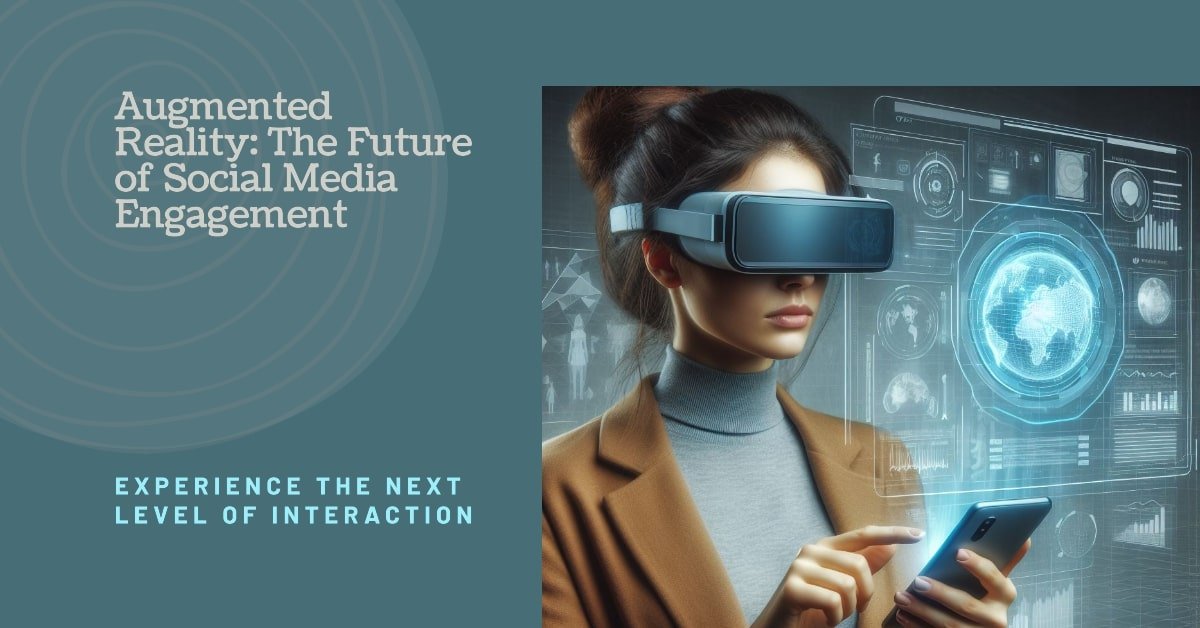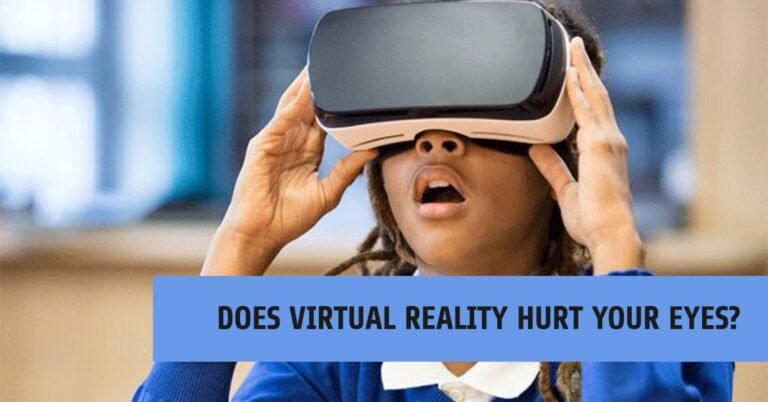Augmented Reality: The New Frontier in Social Media Engagement
Imagine trying on a new pair of sunglasses virtually before you buy them, or seeing a mythical creature come to life right in your living room through your phone. That’s the magic of Augmented Reality (AR), and it’s rapidly transforming the way we interact with social media.
Augmented Reality: The New Frontier in Social Media Engagement is no longer science fiction. It’s a powerful tool that brands and creators can leverage to create immersive experiences, boost engagement, and forge deeper connections with their audiences.
In this comprehensive guide, we’ll delve into the world of AR social media engagement. We’ll explore:
- What exactly is AR and how does it work?
- The incredible benefits of AR for social media marketing and content creation.
- Practical strategies and real-life examples to inspire your AR campaigns.
- Tips and tricks to get started with AR on popular social media platforms.
- FAQs to address your burning questions about AR and social media.
By the end of this guide, you’ll be equipped with the knowledge and inspiration to harness the power of AR and take your social media engagement to the next level. So, buckle up and get ready to explore the exciting frontier of AR!
What is Augmented Reality (AR) and How Does it Work?
Augmented reality (AR) overlays digital elements in the real world in real time. Think of it as a bridge between the physical and digital worlds. It uses your smartphone or tablet’s camera to recognize your surroundings and then superimposes computer-generated images, animations, or 3D models on top of them.
Here’s a breakdown of how AR works:
- Device Recognition: Your smartphone or tablet camera captures the real-world environment.
- Image Processing: The software analyzes the camera feed, identifying key points like surfaces, objects, or light sources.
- Augmentation: Based on the analysis, digital elements are seamlessly overlaid onto the real-world view through your device’s screen.
- Interaction: Depending on the AR application, you can interact with the digital elements through touch, gestures, or location tracking.
Let’s look at a familiar example: Remember those Pokémon popping up on your street corners while playing Pokémon Go? That’s a prime illustration of AR in action. The game used your phone’s GPS and camera to project virtual Pokémon characters onto your real-world surroundings, encouraging exploration and social interaction.
AR is still a young technology, but it’s rapidly evolving, offering exciting possibilities for the future of social media engagement.
But how exactly can you leverage AR to achieve your social media goals? We’ll explore a range of creative strategies and real-world examples to show you the power of AR in action.
How AR Captivates Audiences on Social Media
AR’s ability to blend the physical and digital worlds fosters deeper engagement in several ways:
- Interactive Experiences: AR filters and effects let users actively participate in your content. Picture a clothing brand offering virtual try-on experiences, or a musician creating an AR filter that brings their album artwork to life.
- Gamification: AR games can incentivize interaction and brand recall. Imagine a furniture store hosting an AR scavenger hunt where users find virtual furniture pieces hidden around their homes.
- Educational Opportunities: AR can be a powerful educational tool. Museums can use AR overlays to provide additional information about exhibits, or a beauty brand can showcase product ingredients through interactive AR experiences.
Real-World Example: Pokemon Go
Remember the global phenomenon of Pokemon Go in 2016? This AR mobile game, where users captured virtual Pokemon in the real world, became a cultural sensation. It perfectly illustrates the power of AR to create interactive experiences that drive engagement and brand awareness.
Creative AR Strategies for Social Media Success
Now that you understand the core benefits of AR, let’s explore some winning strategies to put into practice:
- Product Launches: Generate excitement for new product releases with interactive AR experiences. Imagine a car manufacturer showcasing a new car model through an AR filter that allows users to virtually “park” it in their driveway.
- Events and Promotions: Create buzz around events and promotions with AR filters and games. A music festival could offer an AR filter that lets users virtually “wear” festival merchandise, while a restaurant could host an AR game where users collect virtual ingredients to unlock discounts.
- Behind-the-Scenes Access: Offer a glimpse into your brand story with AR. A fashion brand could showcase their design process through an AR filter that allows users to virtually “walk” through their design studio.
Remember: The key to successful AR campaigns lies in creativity and relevance to your target audience.
Getting Started with AR on Social Media
The good news? You don’t need a team of tech wizards to get started with AR on social media. Many platforms like Facebook, Instagram, and Snapchat offer built-in AR features and filters that are easy to use.
Here are some tips to get you going:
- Identify Your Goals: What do you hope to achieve with your AR campaign? Increased brand awareness, website traffic, or user-generated content?
- Choose the Right Platform: Consider which social media platforms your target audience frequents most and what AR features they offer.
- Partner with AR Developers: For more complex AR experiences, consider collaborating with AR developers who can create custom filters and effects.
Don’t wait any longer! Explore the exciting possibilities of AR and start crafting engaging social media experiences that will leave your audience wanting more.
Why Augmented Reality is a Game-Changer for Social Media Engagement
Augmented reality (AR) isn’t just a fancy gimmick; it’s a strategic tool that can completely redefine how you connect with your social media audience. Here’s why AR is a game changer for social media engagement:
Immersive Experiences:
AR transcends static images and videos, creating interactive experiences that truly captivate your audience. Imagine trying on clothes virtually, placing furniture in your living room before you buy it, or attending a virtual concert with friends – all through your phone! These immersive experiences boost engagement and create lasting memories for your followers.
Increased User-Generated Content (UGC):
AR features on social media platforms are specifically designed to encourage user participation. Interactive filters, virtual challenges, and AR games incentivize users to create their own content using your brand’s AR elements. This UGC fuels organic reach and brand awareness, turning your audience into brand advocates.
Boost Brand Recall and Recognition:
AR experiences are inherently unique and memorable. They allow you to showcase your brand in a novel and interactive way, leaving a lasting impression on your audience. Think about it – who wouldn’t remember a brand that lets you virtually try on their latest sunglasses or see their mascot come to life in your living room?
Measurable Results:
Unlike traditional marketing methods, AR campaigns offer valuable data and analytics. You can track metrics like user engagement time, completion rates of AR experiences, and even purchase conversions directly influenced by your AR campaign. This data allows you to refine your strategies and maximize your return on investment (ROI).
Breaking Down Geographical Barriers:
AR bridges the gap between physical location and online interaction. Imagine attending a virtual product launch event or participating in an interactive scavenger hunt – all from the comfort of your home. AR fosters a sense of community and allows you to connect with a global audience regardless of geographical limitations.
Real-World Example: Let’s look at a concrete example. Makeup brand Sephora utilizes AR to allow users to virtually try on different lipstick shades before purchasing. This not only increases customer confidence in their choices but also leads to higher conversion rates and reduced product returns. This is the power of AR in action – creating a fun and interactive experience that benefits both the brand and the customer.
Strategies and Case Studies for Social Media Success
Now that you understand the magic of AR and its potential to transform social media engagement, let’s explore some practical strategies and inspiring case studies to get you started.
Crafting Winning AR Social Media Campaigns:
- Define Your Goals:
Before diving into the technical aspects, clearly define the goals you want to achieve with your AR campaign. Do you want to increase brand awareness, drive product sales, or generate user-generated content (UGC)? Knowing your goals will help you tailor your AR experience and measure its success. - Know Your Audience: Understanding your target audience is crucial for any social media strategy, and AR is no exception. Consider what kind of AR experiences would resonate with your followers. Are they interested in trying on new clothes virtually? Participating in interactive games? Tailoring your AR experience to their interests ensures maximum engagement.
- Choose the Right Platform:
Different social media platforms offer varying AR features and functionalities. Instagram has popular AR filters, while Snapchat allows for location-based AR experiences. Explore the available options and choose the platform that best aligns with your campaign goals and target audience. - Keep it Simple and Engaging: While AR offers vast possibilities, it’s important to keep your initial AR experience simple and user-friendly. Complicated experiences can overwhelm users and lead to drop-offs. Focus on creating an intuitive and engaging experience that showcases your brand effectively.
- Promote Your AR Experience: Once your AR experience is live, don’t leave it to chance to be discovered! Promote it across your social media channels, create explainer videos, and collaborate with relevant influencers to spread the word.
Case Studies in Action:
Here are some inspiring examples of brands leveraging AR to achieve social media success:
- Nike’s AR Try-On for Sneakers: Imagine virtually trying on a new pair of Jordans before heading to the store. Nike’s AR app allows users to do just that, using their phone’s camera to see how different sneakers look on their feet. This not only increases purchase confidence but also generates excitement and buzz on social media.
- L’Oreal’s Virtual Hair Color Try-On: Ever wondered what you’d look like with fiery red hair or cool blonde highlights? L’Oreal’s AR app lets users experiment with different hair colors virtually, encouraging them to share their makeovers on social media. This playful and interactive experience drives brand awareness and product consideration.
- IKEA’s Placement in Your Room App: Unsure if that new couch will fit your living room? IKEA’s AR app allows users to virtually place furniture models in their actual space, taking into account scale and dimensions. This practical AR tool reduces purchase anxiety and fosters customer confidence, leading to more satisfied customers.
These are just a few examples, and the possibilities are truly endless. Remember, AR is a constantly evolving technology, so stay tuned for even more innovative and engaging experiences in the future!
Getting Started with AR on Social Media Platforms
Now that you’re armed with inspiration, let’s explore how to get started with AR on some popular social media platforms:
- Instagram: Instagram offers a variety of AR filters that users can create and share. Explore Spark AR Studio, a user-friendly platform for building your interactive filters.
- Facebook: Facebook allows incorporating AR experiences into advertising campaigns. You can create interactive AR ads that users can experience directly within the Facebook app.
- Snapchat: Snapchat is known for its playful AR filters and lenses. Explore creating custom lenses for your brand that users can discover and share through the platform.
Remember: Before diving into development, check each platform’s specific AR guidelines and technical specifications.
The Future of AR and Social Media Engagement
Augmented reality (AR) has already begun transforming the way we interact with social media, but the future holds even more exciting possibilities. Here’s a sneak peek into what we can expect:
Deeper Merging of Physical and Digital Worlds:
Imagine attending a virtual concert with friends in your living room, complete with holographic projections and interactive elements. AR will seamlessly blend the physical and digital, creating immersive social experiences that transcend the limitations of screens.
AI-powered Personalization:
AR experiences will become hyper-personalized using artificial intelligence (AI). Imagine trying on clothes that adjust to your body type virtually, or seeing furniture that perfectly complements your existing décor. AI will personalize AR experiences to individual preferences, making them even more engaging and relevant.
Social Shopping Revolution:
AR will revolutionize social commerce. Imagine browsing virtual stores with friends, virtually trying on clothes, or testing out products before you buy. Social media platforms will become one-stop shops for discovery, interaction, and purchase, all within an AR environment.
Location-Based AR Games and Experiences:
AR will transform our physical surroundings into interactive playgrounds. Imagine scavenger hunts that unfold across city streets, or location-based games that pit friends against each other in augmented reality. Social media will become a platform for gamified experiences that encourage exploration and connection.
Widespread AR Glasses Adoption:
As AR glasses become more affordable and user-friendly, their adoption will skyrocket. This will usher in a new era of social interaction where AR experiences are seamlessly integrated into our everyday lives. Imagine sharing a virtual reality experience with a friend across the globe, all through your AR glasses.
Evolving Content Creation Tools:
The future holds exciting possibilities for AR content creation. User-friendly tools will empower anyone to create interactive AR experiences, democratizing the process and fostering a more creative social media landscape.
Ethical Considerations and Privacy Concerns:
As AR continues to evolve, ethical considerations and privacy concerns will need to be addressed. Transparency and user control over data will be paramount to ensure a positive and responsible future for AR in social media.
The future of AR and social media engagement is brimming with possibilities. It’s a future where the boundaries between the physical and digital are blurred, and social interaction takes on entirely new dimensions. Are you ready to step into this exciting new world?
FAQs about AR in Social Media
Is AR expensive to use on social media?
Many AR features on social media platforms are free to use. For custom AR experiences, there might be development costs involved.
Can I measure the success of my AR campaign?
Yes! Most social media platforms provide analytics tools that can track metrics like impressions, engagement, and reach for your AR content.
Where can I learn more about AR for social media?
Websites like ARVRRealm.com offer valuable resources and tutorials on AR development and implementation.
Is AR here to stay, or is it just a fad?
AR technology is rapidly evolving, and its integration with social media is only just beginning. With the increasing popularity of immersive experiences and the growing adoption of AR devices, AR is expected to become a mainstay in the social media landscape.
How can I stay updated on the latest AR trends for social media?
Follow industry publications and blogs like ARVRRealm.com focusing on AR developments. Additionally, explore social media platforms themselves and see how brands are innovating with AR features.
Do I need any special equipment to use AR?
In most cases, no! Many AR experiences can be accessed through your smartphone or tablet camera.
How much does it cost to create an AR experience?
Costs can vary depending on the complexity of the experience. There are even free AR creation tools available for beginners.
Can I measure the results of my AR campaign?
Absolutely! Social media platforms provide analytics for AR experiences, allowing you to track engagement metrics and measure the success of your campaign.
I’m not a tech expert – can I still use AR for social media?
Absolutely! Many social media platforms offer user-friendly tools for creating basic AR experiences. There are also online communities and tutorials to help you get started. Don’t be afraid to experiment and explore!
Conclusion
Augmented reality (AR) is no longer a futuristic fantasy; it’s a powerful tool that can revolutionize your social media engagement strategy. By creating immersive experiences, fostering user-generated content, and fostering deeper brand connections, AR allows you to stand out in a crowded digital landscape.
So, are you ready to embrace the future of social media? Dive into the world of AR, unleash your creativity, and watch your social media engagement soar!
Don’t wait any longer! Explore the AR features offered by your favorite social media platforms and start brainstorming ideas for your first AR campaign. With a little planning and creativity, you can leverage the power of AR to connect with your audience in a whole new way. We hope this comprehensive guide has equipped you with the knowledge and inspiration to take your social media presence to the next level. Happy AR-ing!





